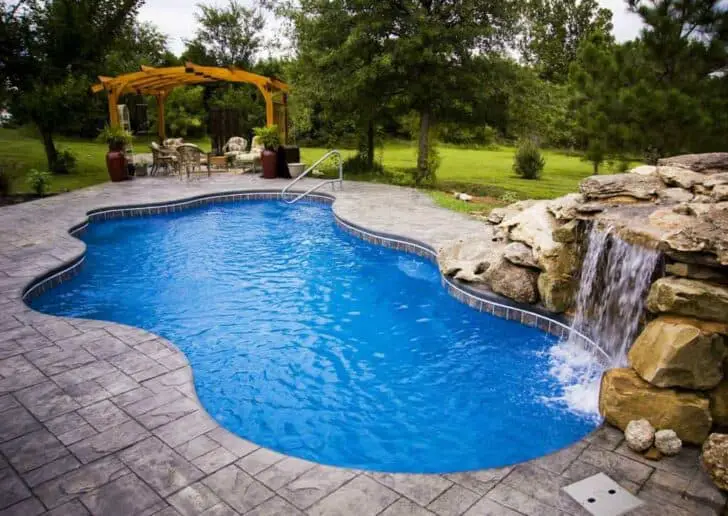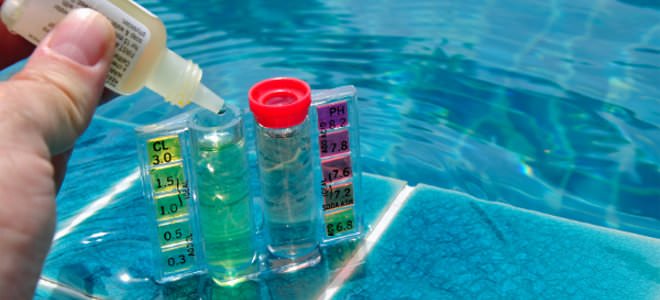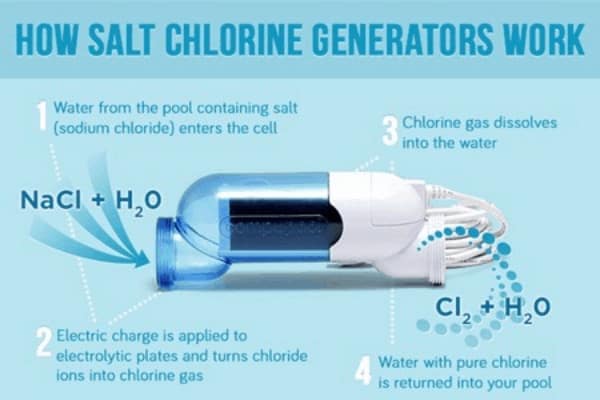Treating your pool with salt is a well-known method that differs greatly from chlorine or bromine. What are the advantages and disadvantages of a salt water pool? Here’s what to remember about this type of treatment.

Benefits of a salt water pool
A swimming pool with salt is distinguished on many points in relation to a basin disinfected with chlorine or bromine. Salt has several advantages:
- Simplified use: Salt works with an electrolyser so that the water treatment is automated. The maintenance is thus easier for the owner especially since the replenishment of salt is much less frequent than with the disinfectant pebbles, and the anti-algae are no longer necessary;
- Better for health: Salt is natural so that it does not have the disadvantages of chemicals, such as chlorine for example, on the health of bathers. There is no risk of irritation or allergies to eyes and skin; It is also odorless;
- Reinforced safety: Because of its natural appearance, salt is also interesting because it does not include the dangers associated with the storage of chemicals (storage out of reach of children and animals, in a dry place …);
- Environment respected: Again, the natural character of salt makes it an ecological treatment. It does not pollute and does not imply, in the event of emptying the basin, that it must first purify the water of any chemical.
Disadvantages of a salt water pool
However, a salt pool has certain constraints, including:
- Increased pH of the water: Salt treatment tends to increase the pH level so that the owner must regularly follow his level to adapt it if necessary or, for more tranquility, Provide a pH regulator;
- Corroded materials: The salt is corrosive and attacks the electrolyzer prematurely if it is not self-cleaning or washed frequently. It is also the reason why the appliance must be stopped when the water temperature is less than 16 degrees, the corrosive power of the salt then being tenfold. Moreover, this phenomenon does not stop with the electrolyser and concerns many pieces of equipment of the swimming pool, including those in stainless steel;
- Higher cost: Salt treatment generally costs a little more than chlorine or bromine. If the price of the raw material is much less, it is the purchase and installation of the electrolyser, on average of 1,500 dollars, which are expensive. Value for money considered, a salt pool is, however, more interesting.

The fact that the water is salted can finally be a discomfort for some swimmers, but the taste is extremely light and is not comparable with that of sea water.
How Salt Electrolysis Works
Pool salt is poured into the pool water at a rate of 3 g / L. The electrolyser is connected to the pool filtration circuit. Salt makes it possible to disinfect the water, as it passes into the electrolyzer, it turns into natural, active chlorine.

The salt water will pass into the electrolyzer, it will receive an electrical discharge (a low voltage current), which will create an electrochemical reaction: salt and water will turn into sodium hypochlorite, natural chlorine. Natural chlorine, once in contact with water will become active, a powerful disinfectant. It is then discharged into the pool through the discharge nozzles.
The natural chlorine thus formed will disinfect the water continuously. Under the effect of UV, it will become salt again (UV causes a reverse chemical reaction). It is a virtuous cycle, repeated to infinity.
